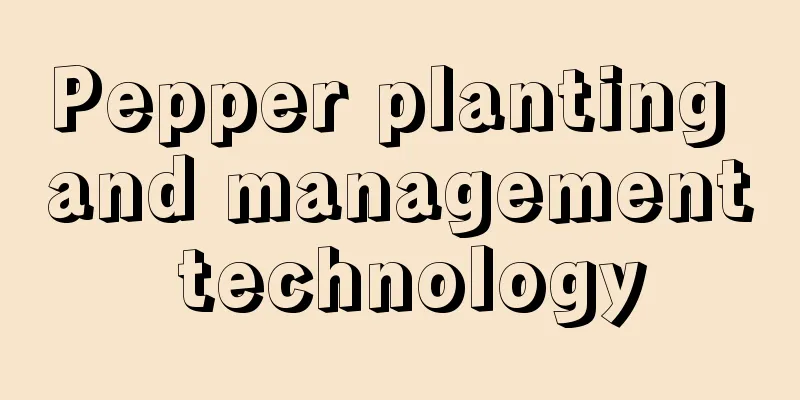Pepper planting and management technology

|
Open-field pepper cultivation, especially early-maturing varieties planted in spring, can effectively promote the early listing of peppers and improve economic benefits through timely seedling cultivation and transplanting, as well as effective field management. Let’s learn about the planting, cultivation and management techniques of peppers. 1. Variety selection The temperature fluctuates greatly in spring, so choose varieties that are early maturing, cold-resistant, heat-resistant, have a long growing period and good yield, such as Hongfeng and Changfeng. In autumn, it is suitable to choose mid-to-late maturing varieties. 2. Seedling cultivation and planting In northern regions, it is best to grow pepper seedlings in protected areas in spring to bring them to market earlier and increase the temperature for growing seedlings. The planting period should be appropriate to avoid frost damage and high temperature. 3. Reference standards for colonization The climatic conditions must be past the last frost period and the ground temperature must be stable at 13-15℃. The seedlings need to be sturdy, with early-maturing varieties having 8-10 true leaves, and mid- to late-maturing varieties having 10-14 true leaves. The main stem should be about 0.5 cm thick, and more than 80% of the plants should have buds. 4. Field management Peppers are tolerant to fertilizer but afraid of drought and waterlogging, and the fertilizer requirement rule is “less at the two ends and more in the middle”. Apply sufficient base fertilizer and appropriate amount of topdressing in the later stage. The base fertilizer is mainly organic fertilizer , combined with phosphorus and potassium compound fertilizer . The first top dressing is about 10 days after transplanting, and subsequent top dressing depends on the watering situation, with top dressing applied every 3 waterings. 5. Pruning Pinch off the tops, leaves, thin out the flowers and fruits, and prune the branches in time to increase ventilation and light transmission. After harvesting the peppers, remove the old and yellow leaves, and remove the weak branches that extend inward. About 15 days after pulling out the vines, remove the tops of all the fruit branches to promote growth of the lower parts. 6. Pest control and weeding Carry out inter-row cultivation and weeding in a timely manner, and harvest the peppers in time according to their growth. At the same time, pay attention to the prevention and control of diseases and pests to ensure the healthy growth of peppers. The above are the key points of pepper management. Through the above management measures, the yield and quality of open-field peppers can be effectively improved and economic benefits can be increased. If you have any other questions, please leave a message.
|
<<: Eggplant planting and management technology
>>: How to prune a peach tree in one year
Recommend
Where to place the seven-leaf lotus for the best fortune
1. Feng Shui Effect These days, it is very common...
Cultivation methods and precautions of Jade Flower
1. Breeding methods 1. Temperature: It is not col...
What water should I use to make aloe vera grow faster?
1. What kind of water should be poured Aloe vera ...
Cauliflower's growing environment and local conditions
Cauliflower Growth Environment and Conditions Cau...
Method of grafting Kalanchoe to take root
1. Time Selection The time for grafting is around...
What to do if you water azalea too much
Overwatering azaleas If the azaleas are overwater...
When is the best month to plant snow peas?
When to plant snow peas Snow peas are suitable fo...
Cultivation methods and techniques of Impatiens
Impatiens is a common ornamental plant with brigh...
Be careful when watering in summer. If you are not careful, the flowers will surely die!
1When to water in summer? The temperature is too ...
The meaning of Wutong
1. Noble character In ancient poetry, the paulown...
How long is the growing cycle of cabbage?
Introduction to Cabbage Growth Cabbage is a herba...
How to prune Epiphyllum
in principle When growing Epiphyllum, in principl...
Old rural items are used to grow flowers and they become as beautiful as a painting. People in the city will be so envious!
Planting flowers and raising fish in water tank I...
How to care for newly bought cold orchids
1. How to deal with cold orchids after buying the...
What is the best season to plant pumpkin?
Every family grows some pumpkins, which will cove...









